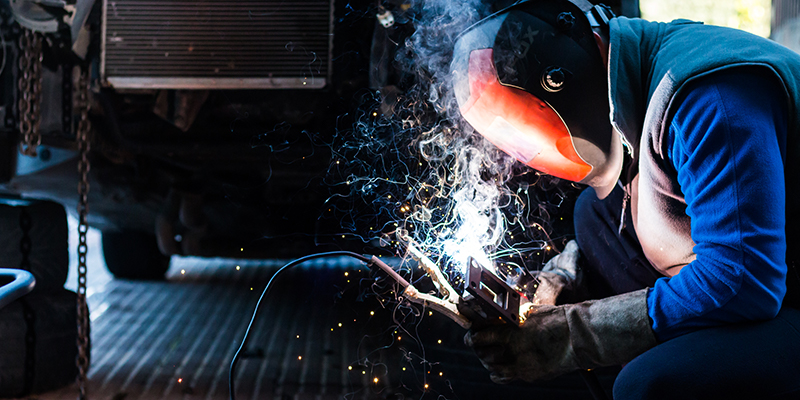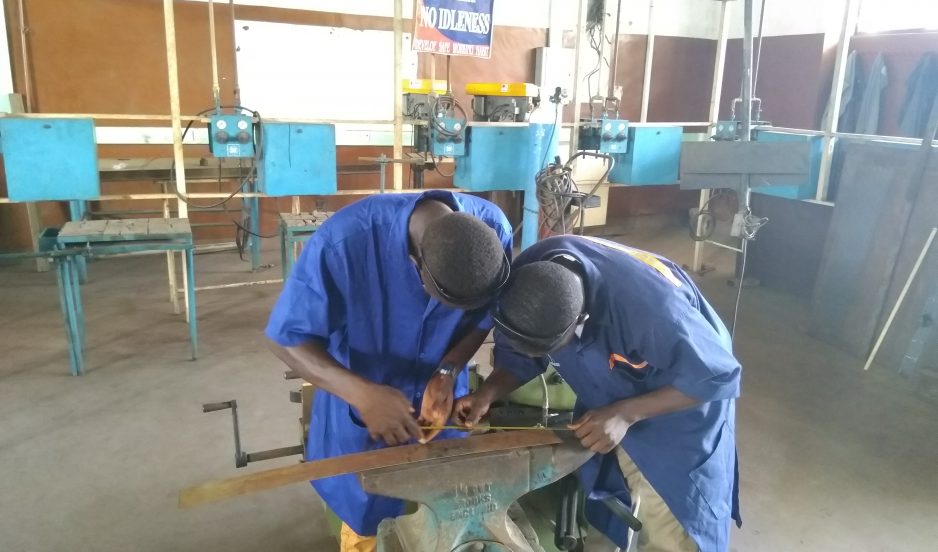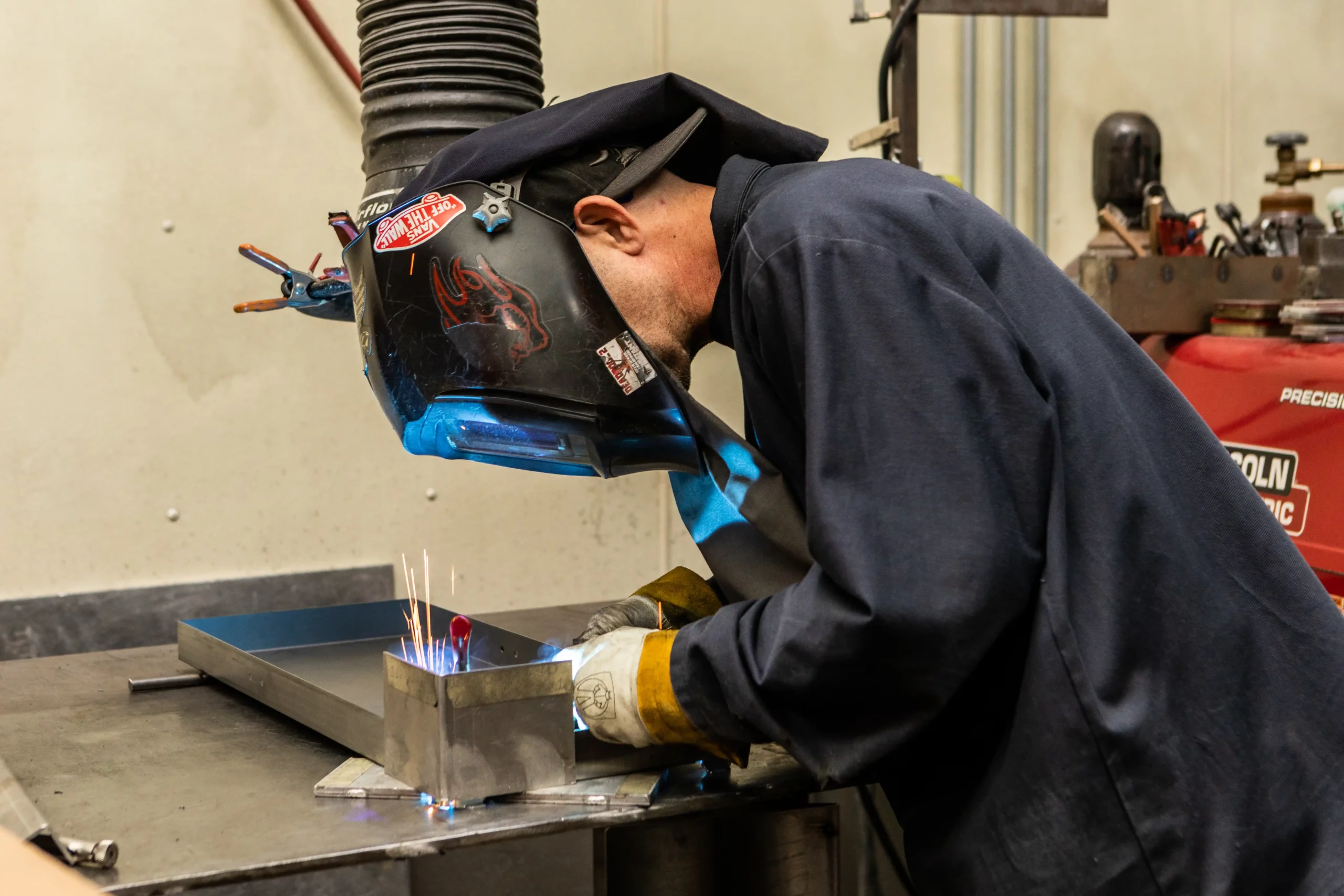Common Welding Repair Work Issues and Just How to Address Them Effectively
Welding repair work typically experience a variety of concerns that can endanger the integrity of the end product. Typical problems include poor penetration, porosity, and imbalance, among others. Each problem offers one-of-a-kind difficulties that need specific strategies for resolution. Comprehending these problems is important for welders intending to improve their results and abilities. This conversation will certainly discover these common welding fixing problems and reliable approaches to resolve them.
Inadequate Infiltration
Insufficient infiltration happens when the weld metal fails to totally fuse with the base product, leading to weak joints and potential structural failings. This concern typically originates from not enough warm input, wrong electrode angle, or incorrect welding rate. Welders may experience poor penetration due to a mistake of the necessary parameters for a specific product thickness or kind. In addition, contamination on the base material's surface area can hinder reliable bonding, intensifying the issue. To resolve insufficient infiltration, welders ought to assure ideal settings on their devices and preserve a clean job surface. Normal examination of welds is suggested to recognize any deficiencies early, permitting for prompt improvements and the prevention of endangered architectural stability in welded assemblies.
Porosity
Porosity is an usual flaw in bonded joints that shows up as little gas bubbles entraped within the weld steel. This defect can jeopardize the honesty of the weld, bring about decreased stamina and potential failing under anxiety. Belgrade Welding. Porosity normally arises from contamination, dampness, or incorrect welding strategies, which allow gases to escape right into the molten weld swimming pool. To resolve porosity, welders must ensure proper surface area preparation, preserve a clean working setting, and make use of appropriate welding criteria. Furthermore, selecting the ideal filler material and protecting gas can mitigate gas entrapment. Routine examination and screening of welds can help identify porosity early, assuring timely restorative activities are taken, thereby preserving the top quality and integrity of the welded framework
Imbalance
Imbalance in welding can develop from different factors, including inappropriate arrangement and thermal development. Understanding the origin triggers is essential for efficient resolution. Several correction methods are available to realign components and guarantee architectural stability.
Reasons for Misalignment
Welding misalignment often stems from a range of underlying issues that can endanger structural integrity. One main cause is improper fit-up of parts before welding, which can lead to gaps and uneven surfaces. Variants in thermal growth throughout the welding process can also lead to distortion, specifically if the materials being joined have different coefficients of development. Furthermore, insufficient fixturing and securing might fail to hold parts securely in position, causing motion throughout welding. Improperly conserved devices, including welding makers and tools, might introduce disparities in the weld grain, more adding to imbalance. Operator error, stemming from not enough training or experience, can additionally play a substantial function in creating misaligned welds.

Improvement Strategies Offered
Attending to imbalance effectively calls for a mix of restorative methods customized to the details issues handy. One common method is using fixtures or jigs to hold parts in the appropriate placement during welding, guaranteeing regular alignment. Additionally, preheating the materials can help in reducing distortion and improve fit-up. For substantial imbalance, mechanical realignment methods, such as making use of hydraulic jacks or clamps, can be used to fix the placement prior to welding. Post-weld warmth treatment might also be required to relieve stress and anxieties brought on by misalignment. Finally, careful assessment and adjustment throughout the arrangement stage can prevent imbalance concerns from coming to be substantial issues, advertising a smoother welding process and boosting total structural honesty.
Distortion
Distortion is a common obstacle in welding that can develop from various elements, consisting of irregular cooling and heating. Understanding the root causes of distortion is important for implementing efficient avoidance methods. Addressing this problem not only improves architectural stability but additionally enhances the overall quality of the weld.
Reasons for Distortion
When subjected to the intense heat of welding, materials usually undertake adjustments that can lead to distortion. This phenomenon largely arises from thermal development and tightening throughout the welding process. As the weld area heats up, the material broadens; upon cooling, it acquires, which can develop internal anxieties. In enhancement, uneven heating across a work surface can exacerbate these tensions, leading to warping or bending. The sort of material likewise plays a significant function; steels with varying thermal conductivity and coefficients of development might react in different ways, leading to uncertain distortions. In addition, bad joint design and insufficient fixturing can contribute to imbalance during welding, boosting the possibility of distortion. Understanding these causes is important for reliable welding repair work and avoidance approaches.
Prevention Techniques
Reliable avoidance strategies for distortion throughout welding emphasis on regulating heat input and making certain correct joint style. Preserving a constant warmth input assists to decrease thermal development and tightening, which can result in distortion. Making use of strategies such as pre-heating the workpiece can likewise decrease the temperature level gradient, advertising uniform heating. Furthermore, choosing appropriate joint designs, such as T-joints or lap joints, can enhance security and decrease anxiety concentrations. Executing appropriate fixturing to protect the workpieces in place additionally help in preserving placement throughout the welding procedure. Staggered welding series can distribute heat a lot more equally, preventing local distortion. By using these strategies, welders can significantly decrease the probability of distortion and boost the general high quality of their welds.
Splitting
Breaking is a try these out common problem run into in welding repair services, commonly arising from various aspects such as improper cooling prices, material choice, or inadequate joint prep work. The occurrence of fractures can considerably compromise the honesty of the weld, resulting in potential failures during procedure. To address this concern, welders need to initially analyze the origin causes, making certain that products work and suitably picked for the specific application. In addition, controlling the cooling price throughout the welding process is necessary; rapid air conditioning can cause stress and anxiety and bring about breaking. Correct joint layout and prep work likewise add to decreasing the danger. Applying these techniques can boost weld high quality and durability, ultimately reducing the probability of fracturing in completed weldments.

Insufficient Blend
A significant issue in welding repair services is incomplete combination, which happens when the weld metal does not adequately bond with the base material or previous weld passes - Montana Mobile Welding and Repair Belgrade. This flaw can cause weak points in the joint, possibly jeopardizing the integrity of the bonded structure. Factors adding to insufficient fusion consist of inadequate warm input, incorrect welding method, and contamination of the surface areas being joined. To address this issue properly, welders should ensure proper pre-weld cleansing and surface area prep work, in addition to adjust their welding specifications to achieve ample penetration and fusion. Routine examination throughout the welding process can additionally assist recognize incomplete fusion early, enabling prompt corrective procedures to improve the general top quality of the weld
Overheating
While welding repair work can improve architectural stability, overheating offers a considerable challenge that can bring about product degradation. Excessive heat during welding can change the mechanical homes of steels, causing reduced toughness, raised brittleness, and warping. This phenomenon is specifically critical in high-stress applications where structural dependability is critical. Determining getting too hot can include visual assessments for staining or distortion, as well as checking temperature level during the welding procedure. To reduce the dangers associated with overheating, welders should utilize ideal methods, such as managing warm input, changing traveling rate, and utilizing suitable filler products. Furthermore, applying pre- and post-weld warm treatments can help recover material homes kinds of welding and improve the general quality of the repair work, guaranteeing long-lasting efficiency and safety.
Frequently Asked Concerns
What Are the Typical Signs of a Welding Flaw?

Exactly How Can I Check My Welds for High quality?
To test welds for high quality, one can make use of aesthetic evaluations, ultrasonic testing, and radiographic approaches. Each technique ensures architectural honesty, determines defects, and validates adherence to specified standards, eventually enhancing the integrity of the welded joints.
What Safety and security Precautions Should I Take While Welding?
When welding, one must focus on security by wearing suitable personal protective equipment, guaranteeing correct ventilation, protecting flammable materials away, maintaining a tidy work space, and being mindful of surroundings to stop injuries and mishaps.
Can I Repair a Weld Without Renovating the Entire Joint?
Fixing a weld without redoing the entire joint is feasible, relying on the damages (Montana Mobile Welding and Repair Belgrade Welding). Methods such as grinding, including filler product, or using a welding process can successfully resolve specific imperfections while preserving the bordering framework
What Equipment Are Necessary for Efficient Welding Fixes?
Crucial devices for effective welding repair services include a welding equipment, cord brush, mill, protective equipment, clamps, and filler materials. Each device plays an important duty in guaranteeing top quality and safety and security during the repair process. Porosity typically emerges from contamination, dampness, or improper welding techniques, which allow gases to run away right into the molten weld swimming pool. Badly conserved equipment, including welding equipments and tools, may introduce variances in the weld bead, Visit Website more adding to imbalance. When subjected to the extreme heat of welding, materials frequently undertake changes that can lead to distortion. Fracturing is a common issue encountered in welding fixings, usually resulting from numerous aspects such as incorrect air conditioning prices, material choice, or inadequate joint preparation. A considerable issue in welding repair services is insufficient combination, which takes place when the weld metal does not appropriately bond with the base product or previous weld passes.